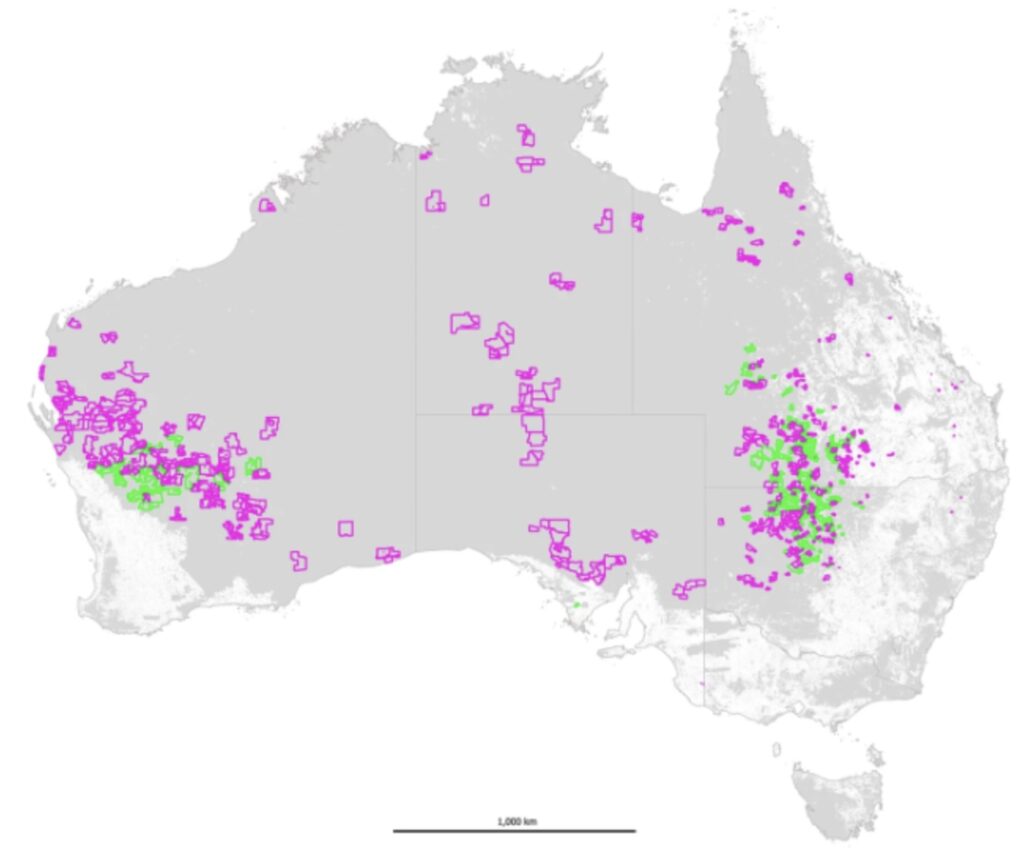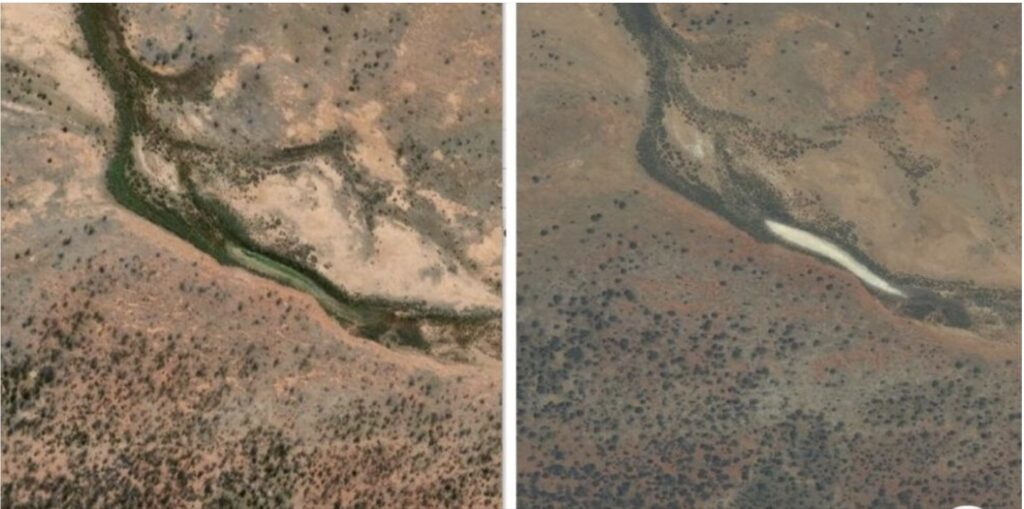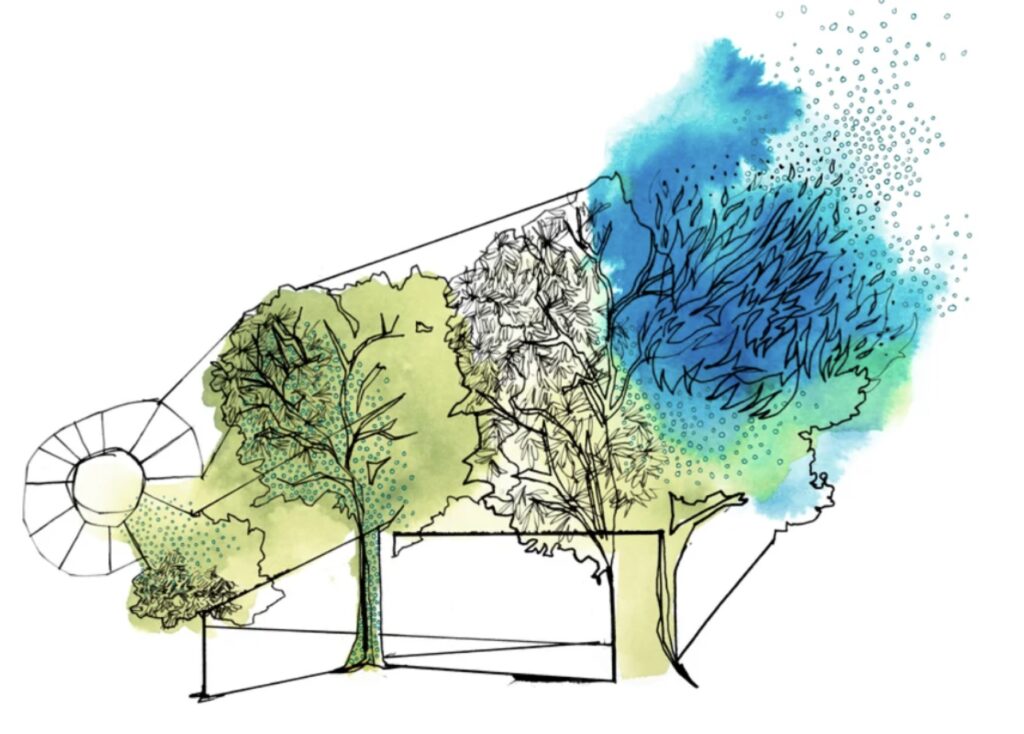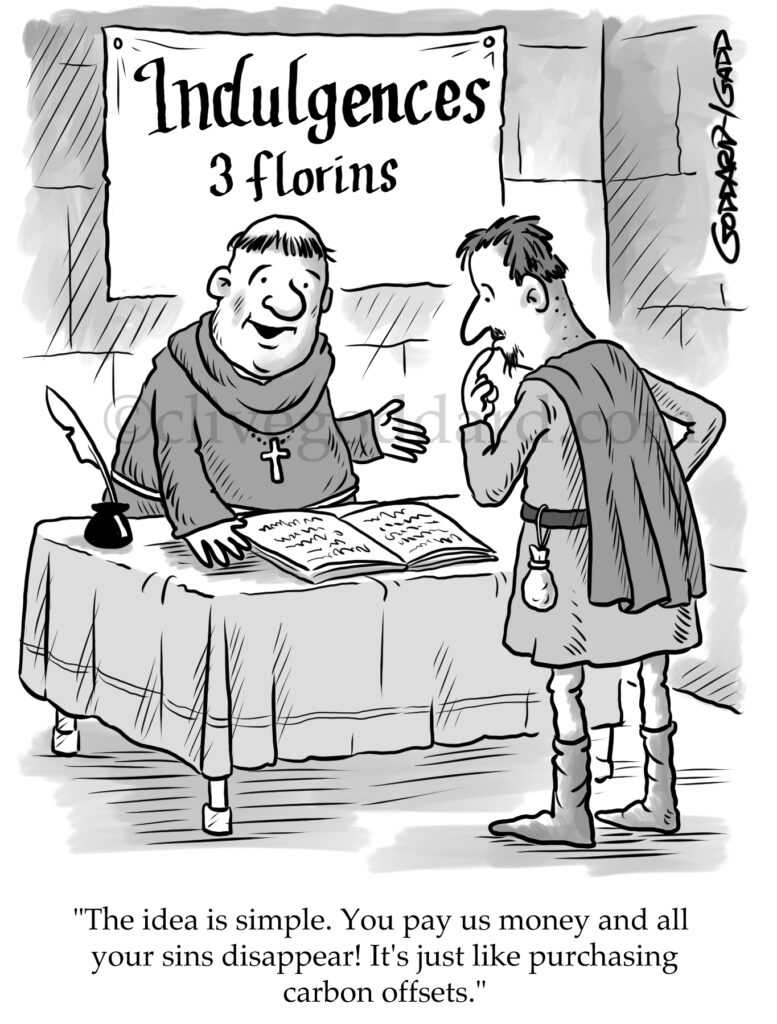Carbon offsetting is an honesty system coupled with a financial incentive for dishonesty.
– Ketan Joshi
Carbon credits, once hailed as a cornerstone of Australia’s climate change strategy, have been unmasked as a financial sleight of hand. They are marketed as a tool to curb emissions, yet in practice, they have become a glorified accounting trick, enriching a select few while diverting funds from genuine climate action. For every dollar that goes into carbon credits, that dollar is not spent on initiatives that could truly reduce fossil fuel consumption.
The core premise is simple: companies can buy carbon credits to “offset” their emissions, with the belief that someone else, somewhere, has reduced or avoided an equivalent amount of CO2. Theoretically, this creates a zero-sum game for the climate. But the reality is far more troubling. This carbon credit system has morphed into a playground for rent-seekers – corporations, governments, and billionaires alike – who exploit its flaws to continue their emissions-heavy practices while pretending to be green.
Much like the indulgences sold by the Catholic Church in the Middle Ages, which absolved the faithful of their sins, today’s carbon credits offer a modern-day form of salvation for “climate sins”. The Church made a fortune from its indulgences, and today’s elites – political and corporate – are raking it in while the rest of us are guilt-tripped into paying for their climate indulgences.
A flawed pillar of Australia’s climate policy
Australia’s Emissions Reduction Fund (ERF), launched in 2014, allows companies to purchase carbon credits—government-issued permits to emit a certain amount of CO2. While this may sound like a practical environmental measure, in reality, it acts as little more than a tax and regulatory control mechanism that lets the fossil fuel industry continue emitting CO2. Renewable energy projects, too, can clear land with impunity, as long as they have the credits to back it up.
A case in point is the Clarke Creek Wind Factory in Central Queensland on the spine of the Great Dividing Range. Despite its poor wind resource—acknowledged even by the project’s proponents—the factory cleared 1,500 hectares of koala habitat to generate lucrative carbon certificates. Companies like Anglo-American Coal then buy these certificates to offset their carbon emissions from mining in Queensland. The result? Business as usual, with no meaningful reduction in emissions, just an environmental disaster papered over with carbon credits.
The government’s power to issue these credits is practically limitless, opening the door to corruption and cronyism. Patronage systems emerge, with politically connected businesses receiving favourable treatment while the rest of us are sold the lie that it’s all for the greater good. Heavy-CO2-emitting industries, particularly mining and energy, can’t feasibly reduce their emissions. Instead, they buy carbon credits, which allow them to continue emitting under the guise of “offsetting” their impact.
False promises of carbon offsets
At the heart of Australia’s offset schemes are Human-Induced Regeneration (HIR) projects, where landowners modify grazing practices to supposedly allow forests to regenerate. However, these projects don’t involve tree planting, and recent research reveals they are largely ineffective.
Studies by Australian National University Professor Andrew McIntosh and others have shown that most of these projects result in minimal, if any, increases in vegetation. Yet over 42 million carbon credits have been awarded for them—credits that are worth millions but contribute little to actual carbon reduction.
In one study, McIntosh and his colleagues assessed 182 HIR projects and found that the carbon sequestered was nowhere near the levels claimed by government models. Billions have been squandered on projects that fail to deliver, and in some cases, they even reduce tree cover.

Similarly, research by McIntosh, Professor Don Butler and others into the Australian Carbon Credit Units (ACCUs) awarded under these schemes, found that over 24.6 million credits, worth $763 million at today’s prices, have been issued with little or no actual carbon sequestration to show for it.
Another scheme, known as “avoided deforestation”, is equally flawed. Credits are awarded based on hypothetical land-clearing rates, and research by Richie Merzian et al . exposed wildly exaggerated assumptions of deforestation rates as high as 12,804 per cent. The result? Billions of dollars in carbon credits for emissions that were never truly avoided.
Macintosh put it succinctly:
We’re seeing projects registered in the deserts of South Australia, the deserts of Western Australia, even near Alice Springs. People are getting credits for growing trees that are already there.
Some of Australia’s biggest corporations are offering thousands of Australians to pay optional fees to offset the emissions from their home electricity use, air travel and vehicle usage. Their money is used to pay for forest regrowth schemes to offset greenhouse gas emissions. However, satellite images from 2011, 2015, 2018 and 2023 shows many of these projects don’t work. There is no evidence of regeneration. Most of the selected areas have never had forests, are unsuitable for forest regeneration and are not producing the increase in tree canopy cover that projects are being credited for.
These companies are receiving carbon credits unlawfully because their projects are junk, and the government is allowing it to continue.
I recently discovered that bankers will soon be able to claim credit for emissions they say their financing has helped avoid, as the world’s largest voluntary carbon accounting framework for the finance industry works on broadening standards.
It is essentially the banking industry now able to trade CO2 reductions from an imaginary increase that may never have occurred. Just another example of the scam quasi-carbon market for our bankers who get richer by getting paid for what they could have done, but didn’t.

Greenwashing at its finest
Big-name corporations, including high-profile individuals like Bill Gates, are among the biggest players in this game. Gates, for instance, travels the globe in his private jets, leaving a vast carbon footprint, but claims to offset it all through carbon credits. Conveniently, Gates is also a major investor in synthetic meat companies – the very solutions he promotes in his book, How to Avoid a Climate Disaster. It’s a convenient racket where those causing the most damage profit from the solutions they push.
In truth, carbon offsets are part of the problem, not the solution. They serve the “Gates & Friends Climate Armageddon Club” as they use fuel-guzzling, carbon-spewing private jets travelling the world, telling ordinary families to live simpler lives and stop using fossil fuels.
Conglomerates and large carbon emitters such as South32 and Woodside are desperately trying to appease the carbon gods by buying up Wheatbelt farms in Western Australia. Once cleared for agriculture, these farms are now being repurposed for carbon offset projects. The situation’s absurdity is stark: productive farmland, vital for feeding a growing global population, is being sterilised to make way for tree planting. This is sold as a solution to climate change, but the only beneficiaries are the mining companies who can now continue emitting CO2 with a clear conscience.
Further blessings will undoubtedly follow as the newly replanted soil is gifted to local Indigenous groups to manage at taxpayers’ expense, while the mining company can sin away, now that it has found a way to pay penance for its guilty behaviour.
An environmental disaster in the making
The biggest hypocrisy in this saga is that, in many cases, carbon credits are being awarded for doing nothing at all. Landowners can be paid to keep forests standing, even when they had no intention of clearing them in the first place. It’s a scam of epic proportions, where the mere “threat” of deforestation is enough to generate millions in credits. Yet, leaving forests untouched often results in short-term carbon storage – when the trees die, that carbon is released. A more sustainable option would be to harvest timber and store carbon in long-lasting wood products, but this inconvenient truth is ignored.
In a twisted turn, even government bodies like the New South Wales National Parks and Wildlife Service (NPWS) have also jumped on the bandwagon, turning National Parks into carbon farms. The NPWS hopes to generate billions in revenue from selling carbon credits. Yet, this is the same agency whose mismanagement of fuel loads led to the catastrophic bushfires in 2019-20, which released vast amounts of carbon into the atmosphere.

Adding insult to injury, a body of highly effective not-for-profit environmental organisations is seeking to end all professionally managed forests based on the wise use of timber resources. The National Parks of NSW, the EPA NSW, the NSW Minister of the Environment, and the National Parks Association of NSW are also working toward the same goal—to end forestry in State Forests.
Bureaucrats within these departments have developed models to prove that the harvesting of native forests leads to more carbon emissions than sequestration. The real world disproves this. The North East NSW Forestry Hub, in association with the North Queensland Forestry Hub, South & Central Queensland Forestry Hub, and the South East Forestry Hub, working with University of Queensland researchers and an officer of the NSW Department of Primary Industry, are currently developing a project titled “Land Use, Land-use Change and Forestry.”
Thus far, their results show two significant findings. Within Australia, agriculture and forestry are the only carbon-negative (climate-positive) sectors. Forest clearing and forest regrowth produce a nil impact on carbon emissions, one balancing out the other. The findings also reveal forestry has better outcomes than locking up the forests and throwing away the keys.
Australia has about 131.5 million hectares of native forest, 1.82 million hectares of plantation estate and 440 million hectares of grassland. If we focus on forests alone, a single hectare absorbs 6.4 tonnes of CO2 per year. Thus, 853.3 million tonnes is absorbed by Australia’s forests each year compared to emissions of 417 million tonnes a year.
Leaving forests in situ and not utilising its timber products is a worse outcome carbon wise. This is because carbon is stored longer in the finished timber product. Delaying harvest, or not harvesting and getting paid for the carbon is a short-term solution which may work until the tree dies.
Not surprisingly, the not-for-profit environmental organisations and green government agencies deny this research because it does not fit the “truth” they desperately seek.
The Climate Change Authority claims Australia needs to convert an area the size of Belgium into forest to achieve net zero emissions by 2050 and the forestry and agriculture needs to play it part in reaching zero emissions, despite already being the only land use sectors that positively sequester carbon. Forestry and agriculture do not need to do any heavy lifting and shouldn’t be the easy solution for other sector’s emissions through dodgy carbon offsetting.
The report even suggested people’s eating habits need to change to lower emission products such as algae, bugs and kangaroo.
The bigger picture: a billion-dollar market built on lies
Like others around the world, Australia’s carbon credit market is set to explode in value. From its current worth of $2 billion, it’s expected to hit $1 trillion in 15 years, even as questions about its effectiveness grow. Actual emission reductions will remain a fantasy as long as this system persists. All that will happen is the rich will get richer and the environment will suffer.
The potential for racketeering knows no bounds. Take, for example, former New South Wales treasurer and environment minister Matt Kean. Kean was recently appointed as Chairman of the Climate Change Authority via a captain’s pick by Climate and Energy Minister Chris Bowen, bypassing a competitive selection process. This was just two months before Kean became a director of strategic partnerships and regulatory affairs at the climate and energy transition investment firm Wollemi Capital. This company invests in carbon credits. The conflict of interest is undeniable as Kean could easily make millions from the same credits the Climate Change Authority regulates and advises the government on, and over which it influences their value.
Conclusion
Australia’s carbon credit system is more than flawed—it’s a dangerous distraction from real environmental action. Australia is already a net carbon sink, and the government needs to stop playing the net zero charade. Given that we generate less than 1.5 percent of the world’s CO2 emissions and are already doing better than Net Zero, does the Government still need to impose policies designed to mitigate and decarbonise the economy?
It’s time to expose the carbon credit con for what it is: a scam that allows the rich to profit for themselves and the ordinary battler to get poorer.

Underpinning the carbon credit con is an even bigger con – the myth that reducing CO2 emissions will ameliorate climate change.
Thanks for another interesting article.
I have been approached by “carpetbaggers” from Queensland extolling such schemes for rangelands with no consideration for the difficulties in measuring the rate of change in stored carbon stocks, and the role wildfire plays.
Also by entrepreneurs (mostly accountants and lawyers) seeking my support for schemes to plant blue gum (E. globulus), a forest species, in 200- 250 mm rainfall north of Geraldton.
Indulgences were small change in respect to this scheme!
Regards
Frank
Great article, Robert.
In my opinion, as much as some countries might try, the ability of humans to influence the constantly changing climate on planet Earth has about as much chance of succeeding as King Canute had in stopping the incoming tide.
If ever there was a scheme designed to be rorted, this is it. Especially the deferred harvest mantra from NSW.
Thousands of hectares of hardwood species were planted in near-coastal areas of Queensland from late 1990s to 2010, by private companies looking to provide carbon offset credits.
The land purchases and tree planting were heavily subsidised by the government. Many contracts only required that the plantations be maintained for two years. By that time, the trees attained a height of around 3 metres due to the luxury conditions of mounding and fertilising, but then declined rapidly after the establishment luxury wore off.
In the following years, large areas on swampy soils died out completely, and the survivors were stunted on dry ridges. Many of these sites now carry less biomass than the original tree cover.
The Queensland Forestry Tree-breeding Research Section began species/site trials at the same time as the schemes began, but private companies did not wait for results before rushing to capitalise in the government largess, with the result that totally inappropriate species such as E. globulus were widely planted and were already failing before research identified the appropriate indigenous Queensland/NSW species.
After the first two years, the trees had to fend for themselves, with very variable results due to many factors such as: species selected not matching the soil type or climate, poor soil, poor drainage, lack of initial weed control, and prolonged drought during that period.
No thinning of successful plantations also resulted in drought losses as the trees began to compete.
Research also developed several successful hybrids, but they came too late to be included, before the government realised they had been conned and pulled the funding.